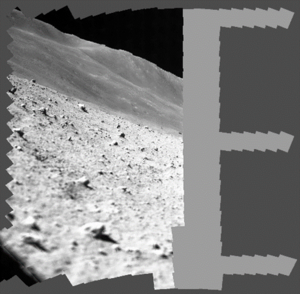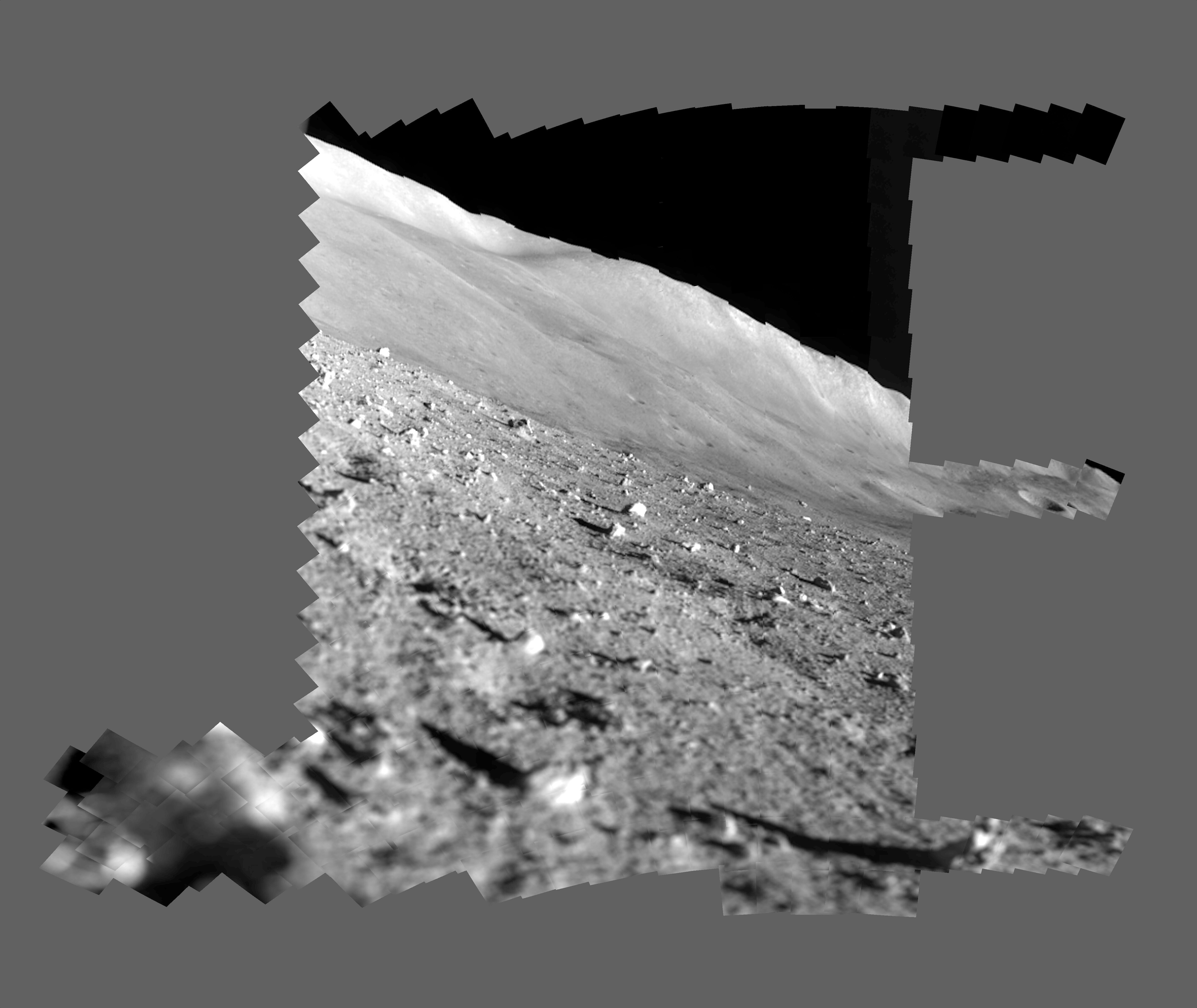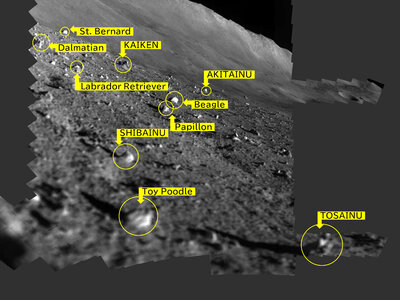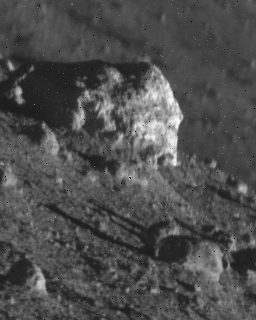Feb 1, 2024
After power was restored to the Smart Lander for Investigating Moon (SLIM) on the lunar surface, the Multi-Band Camera (MBC) onboard SLIM was able to successfully complete the planned 10-band spectroscopy observation and observed more targets than originally expected. These images are released by the Institute of Space and Astronautical Science (ISAS) at the Japan Aerospace Exploration Agency (JAXA), the University of Aizu, and Ritsumeikan University.
Figure 1: Mosaic image of the lunar surface from the scan with the Multi-Band Camera (MBC) onboard SLIM taken immediately after SLIM landed on the lunar surface (left) and immediately after power was restored (right).
The shadows cast in different directions between the two images as the direction of the Sun has changed from east to west.
(Credit: JAXA, RITSUMEIKAN UNIVERSITY, THE UNIVERSITY OF AIZU)
Figure 2: The rocks on which a detailed 10-band observation was performed.
Due to different solar illumination conditions, a few of the rocks selected for observation were changed and additions added.
(Credit: JAXA, RITSUMEIKAN UNIVERSITY, THE UNIVERSITY OF AIZU)
Figure 3: Detailed observation of "AKITAINU" (wavelength 1.65μm) in the near-infrared after the power restoration.
The MBC has an autofocus function which allows distances to be measured by focusing. Once the distance is known, the size of the rock can then be calculated. The distance to "AKITAINU" is 18m, giving a width of 63cm.
(Credit: JAXA, RITSUMEIKAN UNIVERSITY, THE UNIVERSITY OF AIZU)
Figure 4: The SLIM and MBC team immediately after completing the observation plan.
(Credit: JAXA, RITSUMEIKAN UNIVERSITY, THE UNIVERSITY OF AIZU)
After SLIM's power was restored, the MBC conducted two high-resolution 10-band observations of rocks and regolith at 13 observation locations using 333 full-scan images at different wavelengths. Based on the large amount of data obtained, analysis is now underway to identify rocks and estimate the chemical composition of minerals, which will help to solve the mysteries surrounding the origin of the Moon. The scientific results will be announced as soon as they are obtained.







